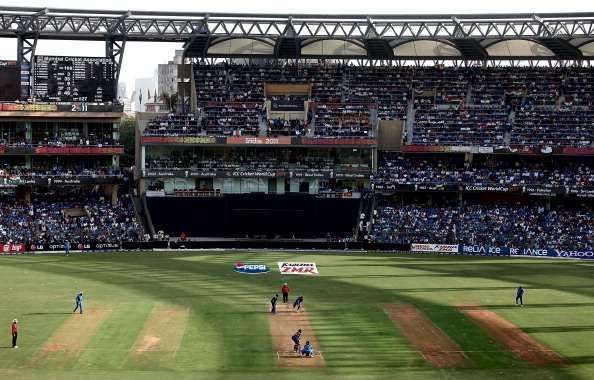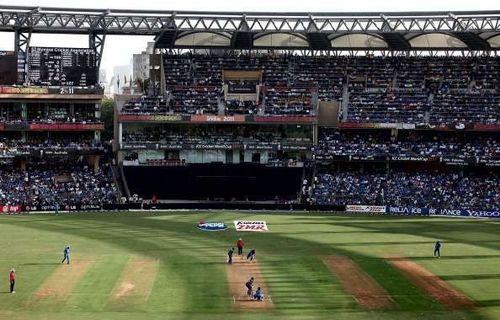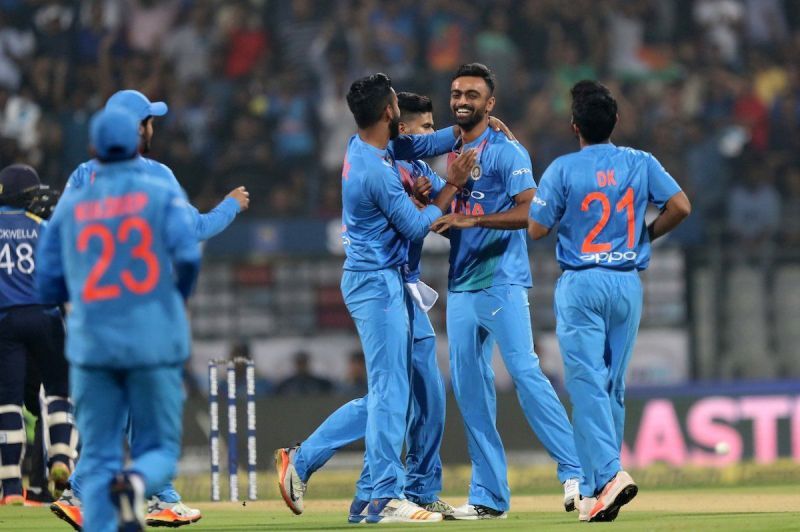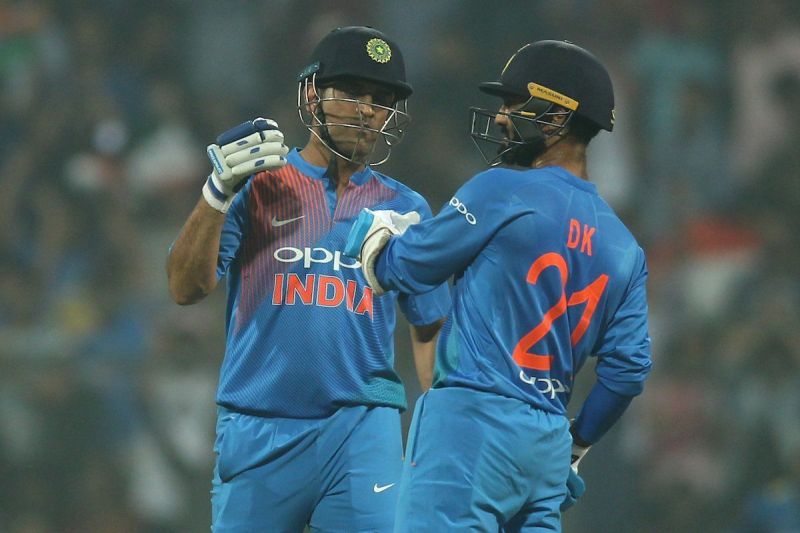
The Heartline of Mumbai: Wankhede

Charni Road to Churchgate Station. Wankhede’s lights dance in the distance and I am a little drunk. The train is empty; the few passengers to Mumbai’s southernmost station are all headed one place. The station is a flurry of people, the India jerseys are unmistakable. Every road merges to a sea of blue, lines upon lines of fans, queuing up outside a cricketing Mecca.
Mumbai is cricket’s capital city. Every day, thousands upon thousands of people live and breathe the sport through their cracked bats and tennis balls, in old shoes and muddy whites, on LED TVs and old-timey radios. It’s no surprise that on the rare occasions that the city hosts an international game, tickets are sold out almost instantly.
Standing in a line is hardly a quiet, orderly process in India; outside Wankhede it is a explosion of impromptu nationalism. Throngs of face-painters, flag-sellers and jersey vendors clamour around me, each selling patriotism at a slightly lower price. I resist. Security is a vaguely sexual procedure, as it always is outside Wankhede, played out to the soundtrack of a heaving stadium. I’m touched. Just 24 hours earlier, I had sat grumpily in a bar in Mumbai’s football-crazy district of Bandra, as fifty Barcelona fans hung on to every minute of ‘El Classico’. With it came doubts of cricket’s supremacy in the hearts and minds of Indian sports fans.
This was therapy. Thirty-two thousand Indians, and hundreds of millions in front of TV screens stood up and sang the national anthem together, an unspoken celebration: of cricket and of our identity as Indians.
Sitting in the aisle was nostalgic of a Wankhede of yore, when wins were rare and T20s were rarer. Now, with a swankier home and a swankier team, with fatter wallets and thinner phones, there was everything to cheer about. And the North Stand Gang knew it. Making up for the (thankful?) lack of pyrotechnics, cheerleaders and over-enthusiastic DJs, they kept a yawning audience awake through what can only be described as a dreadful attempt at batting. It’s difficult to go past their rendition of “Sachiiiiiiiin, Sachin”, the unofficial anthem of Mumbai cricket.
In the 18 encounters between the two sides in 2017, India have won 15. Almost all of them by huge margins. In Sri Lanka there was crowd trouble; rocks were thrown at the team bus. In Mumbai, it is the opposite. Pitying the Sri Lankans, or merely in search of an even contest, Wankhede almost simultaneously starts to cheer for the flailing islanders.
Neither Team India, nor the majority of Indians cheered yet another Sri Lankan wicket. In fact, the biggest cheers of the entire first innings were when Dasun Shanaka hoicked a massive six in the penultimate over. Is it possible that fans of Team India are actually bored of winning too much? Or maybe, in the words of Gaurav Kapoor, there are no Indian cricket fans, just fans of batting.
Somehow, on a slowish pitch, the visitors had spluttered and coughed to 135. In the chase, India’s sparse boundaries were met with roars and chants, a city begging their IPL captain for a six. And he delivered. Then he got out.

Every wicket brought with it a moment of silence, followed by unanimous demand for their once-captain to steer them home once more. He did. Sort of, anyway. India didn’t try anything stupid. In fact, they let the game get close enough for the crowd to get tense, but not so tense that the prayers began. Team India is everything India the country isn’t: near-perfect with almost mechanic certainty.
With three to get in the last over, the crowd figured they had got their money’s worth and headed towards the exits. When Dhoni punished the fourth-last ball for four, thirty thousand Indians sprinted, each pushing their lungs for that little competitive edge over their fellow countrymen. Every time I visit the four-storey stadium, I’m amazed there isn’t a stampede. Keeping the pace with the swarm of men, women and children, I’m deposited onto a railway platform. They say the trains are the veins and arteries of Mumbai, and with every street packed with giddy cricket fans driving home, I relied on the faithful local to get me home.

One thousand cricket fans rode the train back home. It was silent. No chanting, no cricket talk, no half-hearted attempts at analysis. Across from me, a man checked the post-match comments online. After grunting in recognition of our mutual interests, we stayed out of each other’s way. Would it have been this way if we’d just beaten Australia? Are T20s just not that memorable? Is everyone just kind of tired? It’s been a long home season.
Bandra station is grey and paan-stained. A man lays asleep on a bench, clutching his belongings in his slumber. A homeless woman sits on the staircase, stroking her sleeping child. A dog with a skin rash scratches himself, his coat greyed by lengthy exposure to the station. Waves upon waves of people come in and go out, fall asleep and wake up, and get on with their lives. The trains are the heartline of this confusing city of inequities and unplanned roads. And I’m just a speck of blue in this ocean of grey, dwindling under this firecracker-less sky. The trains rumble on without me.